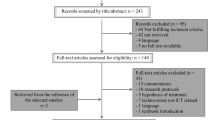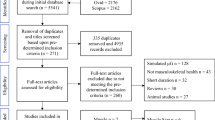Abstract
Introduction: Work-related musculoskeletal disorders (WMSD) affect workers in many occupations including drivers of large vehicles. Urban bus drivers have been found to have high prevalence rates of back problems in overseas studies. Hong Kong is a densely populated city and has a large number of double-deck buses that constitute a major means of public transportation. The present study aimed at investigating the prevalence and characteristics of WMSD in male and female bus drivers who operate double-deck buses in Hong Kong. Method: Altogether 481 bus drivers (404 males, 77 females) participated in the study that consisted of a questionnaire survey as well as physical assessment. The questionnaire included questions on work, musculoskeletal complaints and perceived occupational risk factors associated with each discomfort. Physical assessment consisted of measurement of lumbar spine mobility, hand grip strength, sit-and-reach test, and observation of standing and sitting postures. Results: The results showed generally the male drivers had longer years of work experience but their daily workloads were similar to the females. On the average drivers worked 9–10 h per day, with 5 days on and 1 day off. Neck, back, shoulder and knee/thigh areas had the highest 12-month prevalence rates ranging from 35% to 60%, and about 90% of the discomfort was related to bus-driving. Occupational factors of prolonged sitting and anthropometric mismatch were perceived to be most related to musculoskeletal discomfort. On physical examination, grip strength was significantly related to neck and shoulder discomfort. Conclusions: The present results showed high prevalence rates of WMSD among bus drivers in Hong Kong which warrants further investigation.




Similar content being viewed by others
References
Bureau of Labor Statistics. 2003. Total recordable cases–Injuries and illnesses, 2002: http//www.bls.gov/iif/oshwc/osh/osstb1248.txt., accessed Nov 2005.
Anderson R. The back pain of bus drivers. Prevalence in an urban area of California. Spine 1992;17(12):1481–8.
Magnusson ML, Pope MH, Wilder DG, Areskoug B. Are occupational drivers at an increased risk for developing musculoskeletal disorders? Spine 1996;21:710–7.
Massaccesi M, Pagnotta A, Soccetti A, Masali M, Masiero C, Greco F. Investigation of work-related disorders in truck drivers using RULA method. Appl Ergon 2003;34:303–7.
Van Der Beek AJ, Frings-Dresen MHW. Physical workload of lorry drivers: a comparison of four methods of transport. Ergonomics 1995;38(7):1508–20.
Hulshof CT, Verbeek JH, Braam ITJ, Bovenzi M, van Dijk FJH. Evaluation of an occupational health intervention programme on whole-body vibration in forklift truck drivers: a controlled trial. Occup Environ Med 2006; 63:461–8.
Krause N, Ragland DR, Greiner BA, Fisher JM, Holman BL, Selvin S. Physical Workload and Ergonomic Factors Associated With Prevalence of Back and Neck Pain in Urban Transit Operators. Spine 1997;22:2117–26.
Krause N, Ragland DR, Fisher JM, Syme SL. Psychosocial job facotrs, physical workload, and incidence of work-related spinal injury: a 5-year prospective study of urban transit operators. Spine 1998;23(23):2507–16.
Krause N, Rugulies R, Ragland DR, Syme SL. Physical workload, ergonomic problems, and incidence of low back injury: A 7.5 year prospective study of San Francisco Transit Operators. Am J Ind Med 2004;46:570–85.
Chen J-C, Chang W-R, Chang W, Christiani D. Occupational factors associated with low back pain in urban taxi drivers. Occup Med 2005;55:535–40.
Funakoshi M, Taoda K, Tsujimura H, Nishiyama K. Measurement of whole-body vibration in taxi drivers. J Occup Health 2004;46:119–24.
Mansfield NJ, Marshall JM. Symptoms of musculoskeletal disorders in stage rally drivers and co-drivers. Brit J Sports Med 2001;35(5):314–20.
Porter JM, Gyi DE. The prevalence of musculoskeletal troubles among car drivers. Occup Med 2002;52(1):4–12.
Lyons J. Factors contributing to low back pain among professional drivers: A review of current literature and possible ergonomic controls. Work 2002;19:95–102.
Kelsey JL, Hardy RJ. Driving of motor vehicles as a risk factor for acute herniated lumbar intervertebral disc. Am J Epidemiol 1975;102:63–73.
Frymoyer JW, Pope MH, Clements JH. Risk factors in LBP. An epidemiological survey. J Bone Joint Surg [Am] 1983;65:213–8.
Transport Department, The Government of the Hong Kong Special Administrative Region. http://www.td.gov.hk/transport_in_hong_kong/transport_figures/passenger_journeys/index.htm. Accessed Nov 2005.
Fuerestein M, Shaw WS, Nicholas RA, Huang GD. From confounders to suspected risk factors: psychosocial factors and work-related upper extremity disorders. J Electromyo Kinesiol 2004;14:171–8.
Devereux JJ, Buckle PW, Vlachonikolis G. Interactopms between physical and psychosocial risk factors at work increase the risk of back disorders: an epidemiological approach. Occup Environ Med 1999;56:343–53.
Kuorinka I, Jonsson B, Kilbom A, Vinterberg H, Biering-Sorenson F, Andersson A, Jorgensen K. Standardised Nordic questionnaires for the analysis of musculoskeletal symptoms. Appl Ergon 1987;18(3):233–7.
Yeung E, Chan W, Pan F, Sau P, Tsui M, Yu B, Zaza C. A survey of playing-related musculoskeletal problems among professional orchestral musicians in Hong Kong. Med Problems Performing Artists 1999;14(1):43–7.
Jackson A, James M, Brill PA, Kohl HW, Gordon NF, Blair SN. Relations of sit-up and sit-and-reach tests to low back pain in adults. J Ortho Sports Phys Ther 1998;27:22–6.
Hartvigsen J, Leboeuf-Yde C, Lings S, Corder EH. Is sitting-while-at-work associated with low back pain? A systematic critical literature review. Scand J Public Health 2000;28:230–9.
Mathiowetz V, Kashman N, Volland G. Grip and pinch strength: Normative data for adults. Arch Phys Med Rehabil 1985;66:69–74.
Bellace JV, Healy D, Besser MP, Byron T, Hohman L. Validity of the Dexter evaluation system's Jamar dynamometer attachment for assessment of hand grip strength in a normal population. J Hand Ther 2000;13:46–51.
Hardin JW, Hilbe JM. Generalized estimating equations. Chapman & Hall/CRC, Boca Raton, FL, 2003, pp. 55–95.
Brown H, Prescott R. Applied mixed models in medicine. John Wiley & Sons, Chichester, 1999, pp. 33–101.
Benjamini Y, Hochberg Y. Controlling the false discovery rate: a practical and powerful approach to multiple testing. J Roy Stat Soc B 1995;57(1):289–300.
National Institute for Occupational Safety and Health (NIOSH). Musculoskeletal Disorders (MSDs) and Workplace Factors: a critical review of epidemiological evidence for work-related musculoskeletal disorders of the neck, upper extremity, and low back. Second printing, US Department of Health and Human Services (DHHS), Center for Diseases Control and Prevention, NIOSH. Publication No. 97-141, DHHS, Cincinnati, 1997.
Hooftman WE, Van Der Beek AJ, Bongers PM, van Michelen W. Gender differences in self-reported physical and psychosocial exposures in jobs with both female and male workers. J Occup Environ Med 2005;47(3):244–52.
Pope MH, Magnusson M, Wilder DG. Low back pain and whole body vibration. Clin Ortho 1996;354:241–8.
Chaffin DB, Andersson GB, Martin BJ. Occupational Biomechanics, 3rd edn. John Wiley & Sons, Inc., New York, 1999, pp. 418–26.
Westgaard RH. Work-related musculoskeletal complaints: some ergonomics challenges upon the start of a new century. Appl Ergon 2000;31:569–80.
Bovenzi M, Hulshof CTJ. An updated review of epidemiologic studies on the relationship between exposure to whole-body vibration and low back pain (1986–1997). Int Arch Occup Environ Health 1999;72:351–65.
Lings S, Leboeuf-Yde C. Whole-body vibration and, low back pain: a systematic, critical review of the epidemiological literature 1992–1999. Int Arch Occup Environ Health 2000;73:290–7.
Acknowledgements
The authors would like to acknowledge Dr. Raija Kuisma who initiated this research proposal. We would also like to acknowledge Wilson Lam, Friston Lai, Benson Tse, Dickson Lam, Clara Lee and Linda Chan who have assisted in the data collection and analysis process. We would like to thank the Hong Kong Occupational Safety and Health Council for sponsoring this project and the Motor Vehicle and Transportation Workers’ Union for their collaboration in recruiting their members for this project.
Author information
Authors and Affiliations
Corresponding author
Rights and permissions
About this article
Cite this article
Szeto, G.P.Y., Lam, P. Work-related Musculoskeletal Disorders in Urban Bus Drivers of Hong Kong. J Occup Rehabil 17, 181–198 (2007). https://doi.org/10.1007/s10926-007-9070-7
Received:
Accepted:
Published:
Issue Date:
DOI: https://doi.org/10.1007/s10926-007-9070-7




